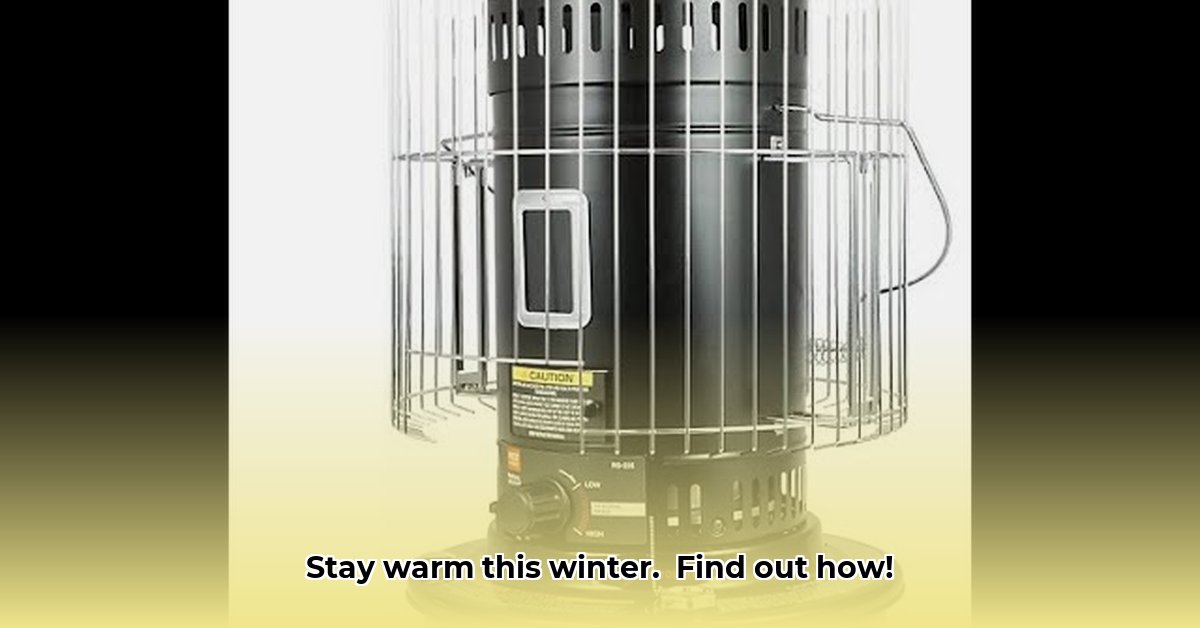
Staying warm during power outages or in off-grid situations is critical. Kerosene heaters offer a reliable, affordable solution, but understanding their safe and efficient operation is essential. This guide provides a comprehensive overview of kerosene heaters available at Tractor Supply, addressing safety, cost-effectiveness, environmental impact, and selection. For more information on Tractor Supply's kerosene heater selection, check out this helpful resource.
Understanding Kerosene Heaters
Kerosene heaters generate heat by burning kerosene fuel. Tractor Supply offers various models, differing in features like BTU (British Thermal Unit) output – a measure of heating capacity; higher BTUs mean more heat. Essential safety features include automatic shutoff (the heater turns off if tipped) and tip-over protection (prevents fuel spills). Understanding these features is crucial before purchasing. Familiarize yourself with the different types available: convective heaters (warm the surrounding air) and radiant heaters (directly heat objects and people).
Safety First: Prioritizing Safe Operation
Safety is paramount. Carbon monoxide (CO), a deadly, odorless gas, is a significant risk. Always ensure adequate ventilation – open windows or use vents to exhaust fumes. Never use kerosene heaters in enclosed spaces without proper ventilation. Install CO detectors for early warnings. Never leave a kerosene heater unattended, especially around children or pets. Refuel only when the heater is completely cool and turned off. Employ caution when handling kerosene; it's flammable. Always follow the manufacturer's instructions precisely. Proper kerosene storage, away from ignition sources and children, is also critical. A well-ventilated area is crucial; insufficient ventilation can lead to severe health risks.
Cost-Effectiveness: Analyzing the Expenses
Kerosene heaters offer a relatively low initial investment. However, running costs depend on fuel prices, heater efficiency, and home insulation. While kerosene is widely available, prices fluctuate, potentially impacting your budget. A well-insulated home significantly reduces fuel consumption, making kerosene a more cost-effective choice. The frequency of use also plays a significant role; extended heater use will lead to higher fuel costs. Consider these factors—upfront cost, fuel cost variability, and energy efficiency—when comparing against other off-grid heating options.
Environmental Impact: Considering the Consequences
Kerosene combustion produces greenhouse gases and contributes to air pollution. While not as impactful as some other fuels, it's essential to consider the environmental cost. Alternatives like propane heaters offer cleaner burning, and electric heaters produce zero direct emissions (provided the electricity source is clean). Wood-burning stoves, while inexpensive, release particulate matter, affecting local air quality. The optimal choice depends on your specific circumstances and environmental priorities. A balanced perspective considers both short-term needs and long-term sustainability.
Choosing the Right Heater: A Step-by-Step Guide
Selecting the appropriate kerosene heater involves several steps:
- Assess your heating needs: Determine the area requiring heating. Larger spaces need heaters with higher BTU ratings.
- Prioritize safety: Choose models with automatic shutoff and tip-over switches.
- Compare BTU outputs: Higher BTUs mean more heat but also higher fuel consumption.
- Check reviews: Research user reviews on Tractor Supply's website or other reliable sources.
- Visit Tractor Supply: Examine models in person to compare features and sizes.
Maintenance and Care: Ensuring Longevity and Safety
Regular maintenance extends heater life and enhances safety. Clean vents regularly to ensure optimal airflow. Follow the owner's manual for specific cleaning instructions. Proper kerosene storage—in a cool, dry place away from heat sources—prevents corrosion and potential hazards. Regular maintenance is vital for safe and efficient operation.
Alternatives: Exploring Other Options
Tractor Supply offers alternatives: propane heaters (efficient, clean-burning), electric heaters (convenient but reliant on electricity), and wood stoves (rustic, cost-effective, but require careful management). The best choice depends on your budget, fuel availability, and environmental concerns.
Conclusion
Kerosene heaters provide a practical, affordable off-grid heating solution. However, safety and environmental impact are crucial considerations. Prioritize safety measures, understand running costs, and balance your needs with environmental responsibility. A well-informed decision ensures warmth and minimizes risks.